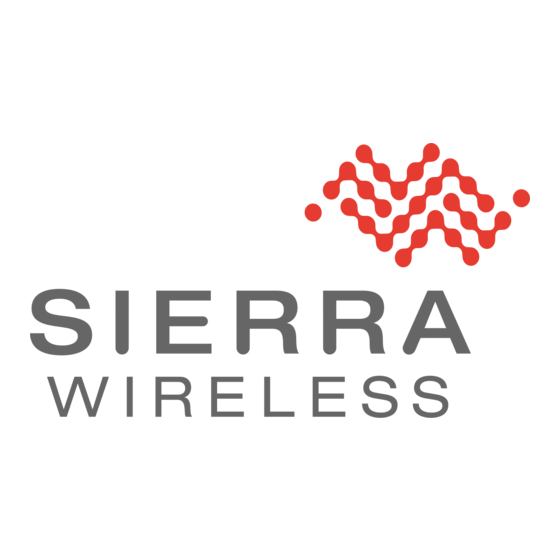
Table of Contents
Advertisement
Quick Links
Advertisement
Table of Contents

Subscribe to Our Youtube Channel
Summary of Contents for Sierra Wireless Writing an embedded application loader
- Page 1 Application Note Writing an embedded application loader...
- Page 2 First edition (January 2005) Sony Ericsson Mobile Communications. publishes this manual without making any warranty as to the content contained herein. Further Sony Ericsson Mobile Communications. reserves the right to make modifications, additions and deletions to this manual due to typographical errors, inaccurate information, or improvements to programs and/or equipment at any time and without notice.
-
Page 3: Table Of Contents
WRITING AN EMBEDDED APPLICATION LOADER Contents Introduction ..................4 Overview ..................... 5 AT commands ...................5 The first packet ..................5 Subsequent packets ..................6 2.3.1 Xmodem-CRC Protocol (CCITT) ...........6 SLP DLL tool .....................9 LZT 123 8094 P1A... -
Page 4: Introduction
WRITING AN EMBEDDED APPLICATION LOADER Introduction Under a number of circumstances either the M2Mpower IDE of the loaders program is not appropriate for loading an embedded application onto a GR or GT module. In this case the developer needs to write a loader for themselves. -
Page 5: Overview
WRITING AN EMBEDDED APPLICATION LOADER Overview To download a script to the module the file transfer needs to follow certain procedures and formats. The following sections describe these and enable the developer to write their own loader which will work in conjunction with the module. -
Page 6: Subsequent Packets
WRITING AN EMBEDDED APPLICATION LOADER 2.3 Subsequent packets The basic format of the packets are X modem protocol, the script is downloaded in raw ASCII format with no interpretation required. It is upto the user application to remove any comments, redundant prtf statements, etc. - Page 7 WRITING AN EMBEDDED APPLICATION LOADER The easiest and fastest way to calculate the CRC is to use a lookup table. The first byte the downloader sends is referred to as the NCGbyte, in the case of the GR47 it is C in ASCII.
- Page 8 WRITING AN EMBEDDED APPLICATION LOADER 5. If everything looks ok, then the downloader appends the bytes in the packet to the file being created (sent). The downloader then sends an ACK byte which tells the uploader to send the next block. If the sums do not match then the downloader sends an NAK byte which tells the uploader to repeat transmission of the block.
-
Page 9: Slp Dll Tool
WRITING AN EMBEDDED APPLICATION LOADER 2.4 SLP DLL tool The figures for the first packet are calculated by the IDE using the SLP.DLL file. In the file package contained on the extranet (SLP_loader_code.zip) is the current version of slp.dll, slpdll.lib and header files with all the required definitions.

Need help?
Do you have a question about the Writing an embedded application loader and is the answer not in the manual?
Questions and answers